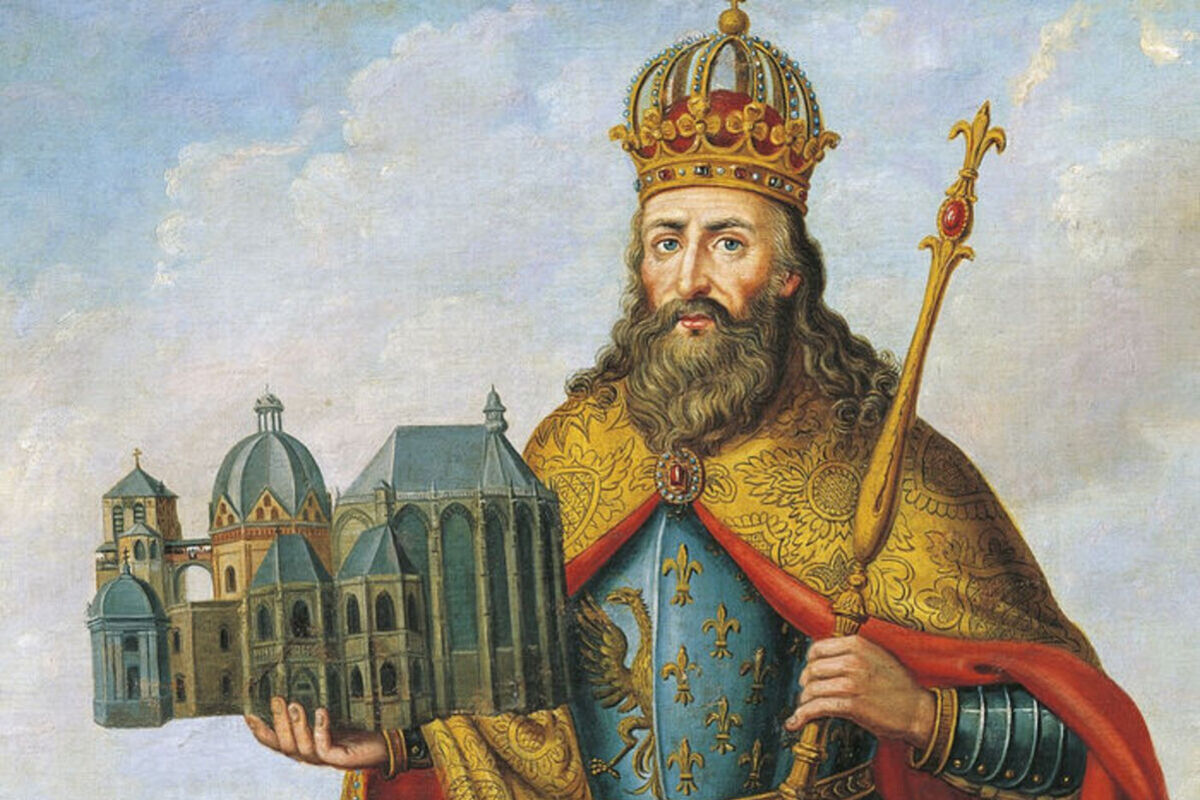Charlemagne is one of the most influential figures in European history, a ruler whose actions laid the foundations for modern Western Europe. His reign became a symbol of the revival of the imperial ideal in the West after the fall of Rome. Through ambitious reforms, military conquests and support for culture, he left a lasting mark on the political, religious and educational landscape of the Middle Ages. Many aspects of his life and legacy continue to fascinate historians. This collection presents interesting and little-known facts about Charlemagne that you might not know.
- Charlemagne was born around the year 742, although the exact date remains a topic of debate among historians. His father was Pepin the Short, the first king from the Carolingian dynasty. Charlemagne transformed the modest Frankish kingdom into a vast empire.
- He inherited the crown in 768 alongside his brother Carloman, but after Carloman’s early death he became the sole ruler. This allowed him to expand his territory and strengthen central authority without internal rivalry. He ruled for more than 40 years, an exceptional length for a medieval monarch.
- In the year 800, Pope Leo III crowned Charlemagne Emperor of the Roman Empire. The coronation took place on Christmas Day at St Peter’s Basilica in Rome. It marked the symbolic restoration of the Western Roman Empire and solidified the alliance between the church and secular power.
- His empire encompassed most of modern-day France, Germany, Italy, the Netherlands, Belgium, Switzerland and parts of Spain. It became the largest political entity in Western Europe since the fall of Rome. For this reason, Charlemagne is often referred to as the Father of Europe.
- Charlemagne was an active reformer of education. He ordered the establishment of schools at monasteries and churches for educating clergy and administrators. This sparked the Carolingian Renaissance, a short but significant period of cultural revival.
- Although he was illiterate in his youth, Charlemagne was determined to learn to read and write. Historical accounts mention that he kept writing tablets under his pillow to practice at night. His personal example encouraged literacy among the nobility.
- He promoted the use of Latin as the main language of administration. This helped preserve classical culture during the so-called Dark Ages. He also created scriptoria where important texts were copied and preserved.
- Charlemagne had at least twenty children from multiple wives and concubines. He paid great attention to their upbringing and education. His son Louis the Pious succeeded him and became the first emperor of the Holy Roman Empire.
- He was not only a conqueror but also a reformer of government. Charlemagne created a system of counties and appointed local rulers who reported directly to him. To oversee them, he established the office of royal envoys who inspected the actions of regional officials.
- Charlemagne gave special attention to church reform. He aimed to unify religious practices throughout his empire. Under his orders, liturgies were standardized and canon law was systematized.
- Contemporary sources describe him as majestic and commanding in appearance. He was reportedly tall, strong, with a short neck and piercing gaze. His physical presence and charisma impressed both allies and enemies.
- Despite his conquests, Charlemagne often sought compromise with subdued peoples. He allowed many of them to retain their own laws and traditions. This helped maintain unity within the empire and reduce the likelihood of rebellions.
- After his death in 814, Charlemagne was buried in a specially constructed chapel in Aachen. The building later became part of the famous Aachen Cathedral. His tomb became a pilgrimage site and a symbol of imperial legacy.
- In 1165, Emperor Frederick Barbarossa secured Charlemagne’s canonization by the Roman Church. His cult was especially popular in Germany. However, his name does not appear in the modern Catholic calendar, and the canonization is considered imperial rather than papal.
- Charlemagne inspired countless legends, songs and medieval epics. His character appears in “The Song of Roland,” one of the most famous works of French heroic literature. He is also present in German chronicles and Renaissance literature.
- His rule saw the creation of a unique political structure combining Germanic customary law with Roman administration. This fusion became the basis for later European legal systems. Charlemagne’s influence can still be seen in modern European law.
- He was a devout Christian and regularly attended religious services. Despite his high status, he dressed modestly and avoided excess. His personal piety was closely connected with political pragmatism.
- The name Charlemagne survives in many European languages as Karl, Charles, Carlos or Carlo. In German he is known as Karl der Große, and in French as Charlemagne. The title “Kaiser” also derives from his name, rooted in the legacy of “Caesar.”
These fascinating and remarkable facts about Charlemagne show just how complex and monumental a figure he was. His legacy encompasses more than military victories — it includes reforms that shaped education, law, religion and culture. Charlemagne became a symbol of European unity and order during an era of instability. The more we learn about him, the better we understand the roots of modern Europe.





